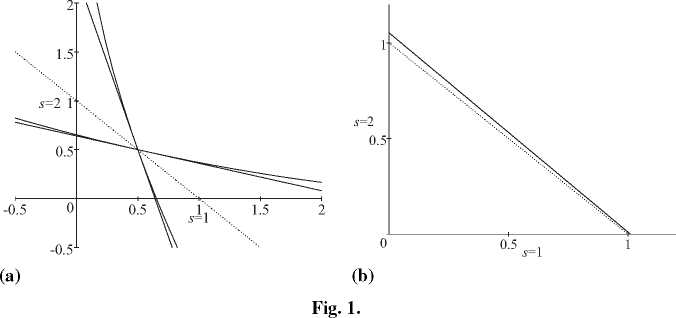112
M. Tirelli

equilibrium state prices, the present value budget constraints of 1 and 2,
respectively, become flatter and steeper, to support the new allocations.
Production GEI. In a production economy, a CPO is a consumption and
production allocation that cannot be Pareto improved by any alternative
resource-feasible allocation, which is achievable through (i) portfolio redis-
tributions, (ii) (technologically feasible) changes of production decisions,
(iii) date zero, lump-sum transfers. In other words, centralized income allo-
cations are still implemented via portfolio transfers; yet, in comparison with
a pure exchange, the planner can affect the asset-payoff structure through
(technologically feasible) production decisions.
Ray technologies. In the context of a one-commodity GEI, Diamond showed
that equilibria are CPO, provided that multi-linear (or ray) production tech-
nologies are assumed (see Diamond (1967)). If more general forms of tech-
nology are introduced, equilibria need not be CPO. This was first demon-
strated by an example of Dreze (see Dreze (1987), Chapter 4, p. 278) and,
more recently, subjected to further investigation in Dierker et al. (1999). Yet,
two things should be noted. First, even with ray technologies a CPO equilib-
rium need not be an IT-CPO. State-contingent tax reforms may modify pro-
duction plans in a way that is not technologically feasible, by independently
controlling production output, state-by-state (although not firm-by-firm). An
illustration of our claim can be immediately derived from Example 1, by
assuming that the only asset is a production plan, ¾. = μsy0, μs ∈ R+, for
alls>0. Then, tax reforms allow the planner to control ys, independently
across states, a much more powerful intervention than just setting y0.
General production technologies. One can show that CPO equilibria may
fail to be IT-CPO for more general forms of technologies. Let us consider
the examples in Dreze (1987) and Dierker et al. (1999). First, recall that
the type of argument provided in these examples is not based on marginal
More intriguing information
1. Implementation of a 3GPP LTE Turbo Decoder Accelerator on GPU2. Une Gestion des ressources humaines à l'interface des organisations : vers une GRH territoriale ?
3. Pass-through of external shocks along the pricing chain: A panel estimation approach for the euro area
4. DISCUSSION: POLICY CONSIDERATIONS OF EMERGING INFORMATION TECHNOLOGIES
5. FISCAL CONSOLIDATION AND DECENTRALISATION: A TALE OF TWO TIERS
6. Types of Tax Concessions for Promoting Investment in Free Economic and Trade Areas
7. Visual Perception of Humanoid Movement
8. CREDIT SCORING, LOAN PRICING, AND FARM BUSINESS PERFORMANCE
9. Transgression et Contestation Dans Ie conte diderotien. Pierre Hartmann Strasbourg
10. Volunteering and the Strategic Value of Ignorance